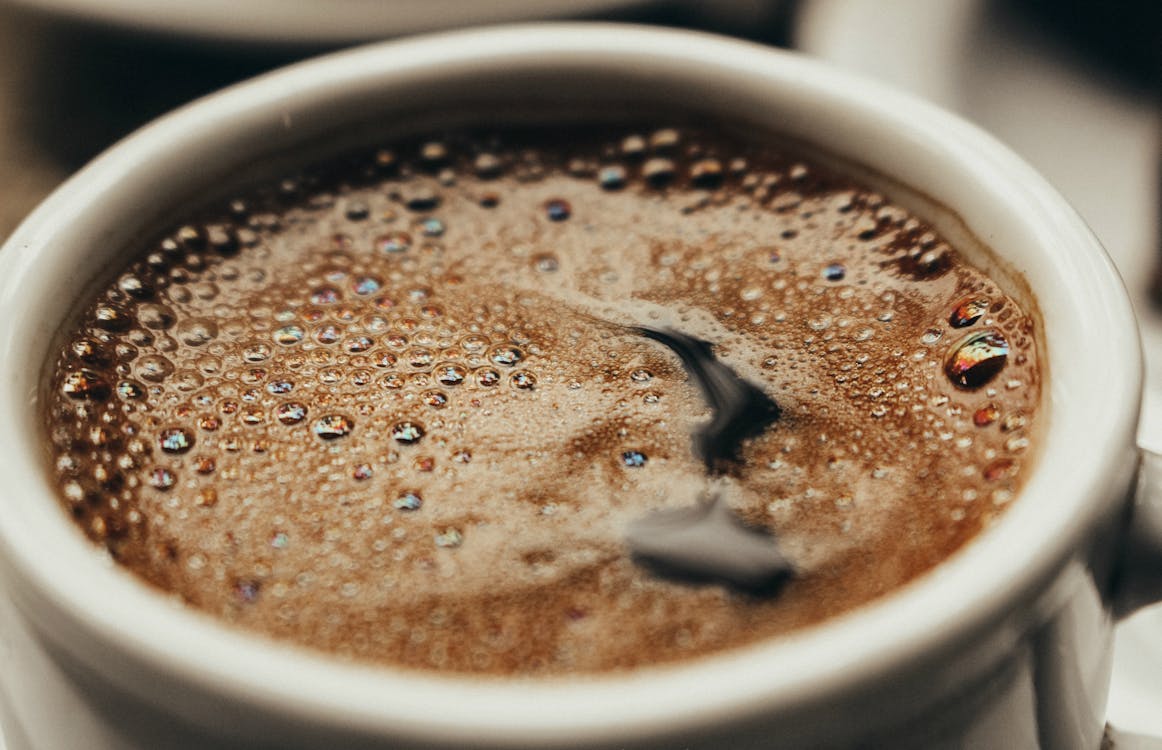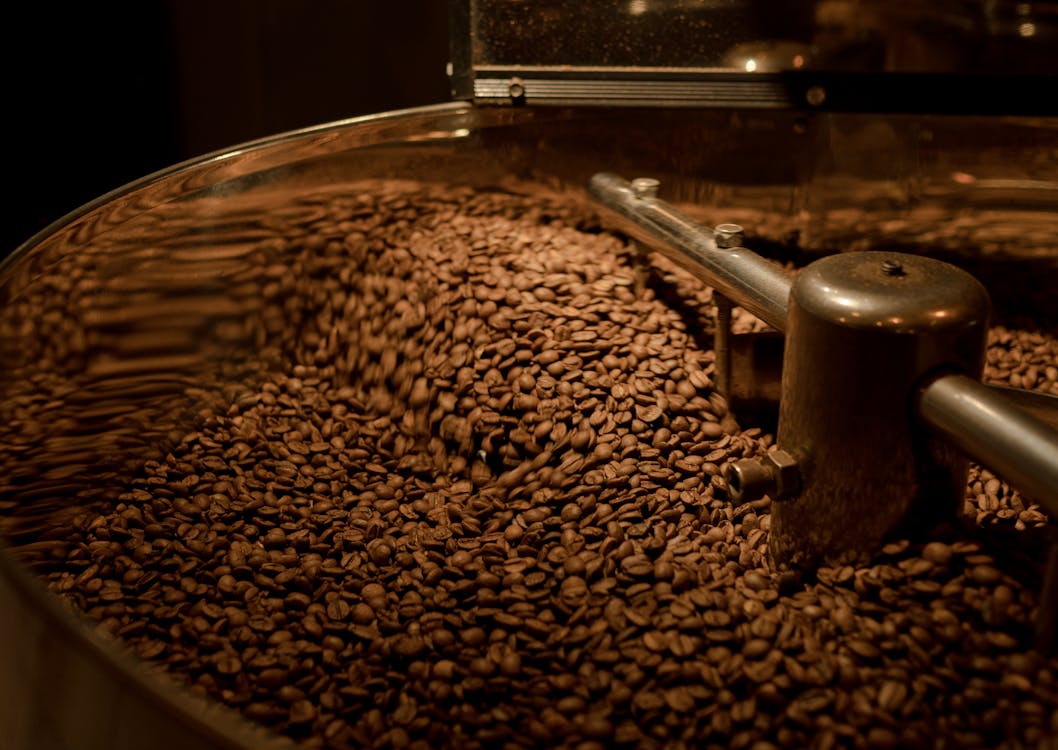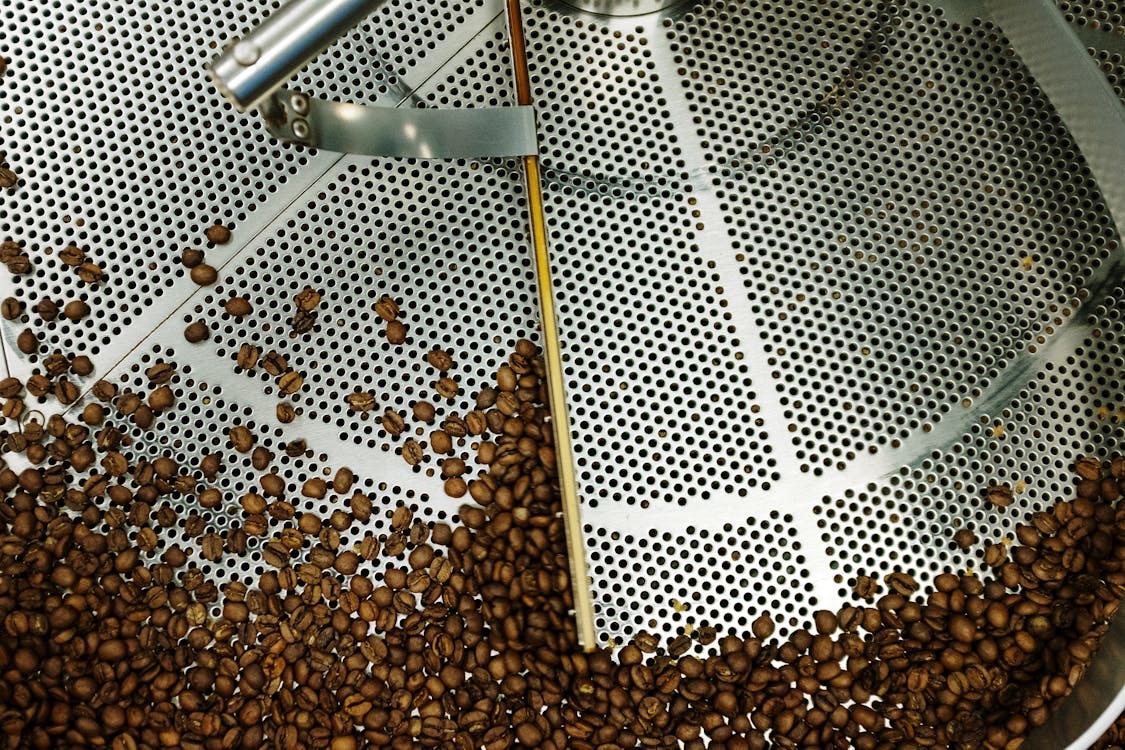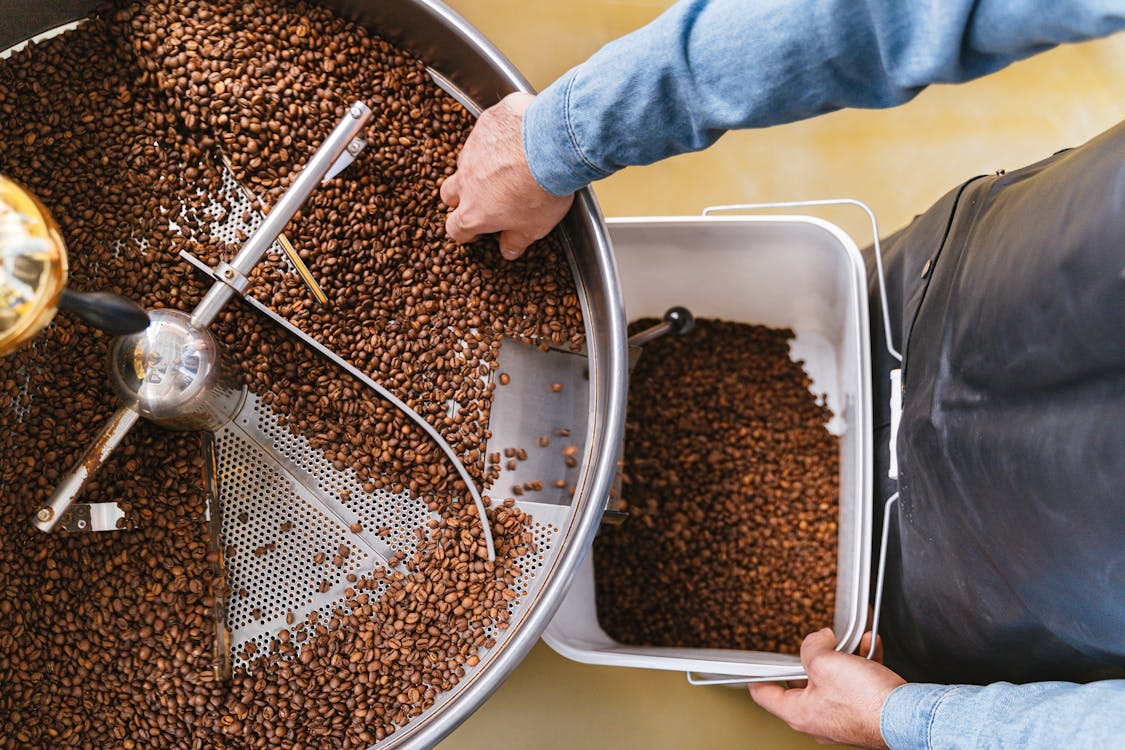You really buzz off a good cup of joe, and the aroma of freshly roasted coffee beans puts a big smile on your face. There's no denying it: You're a coffee connoisseur and can't imagine living without it.
The next step in your love affair with the best brew on earth is roasting coffee at home yourself, and that means deciding between an air roaster vs. a drum roaster.

But which of these two styles of home coffee roasters is best for you? When it comes to choosing the best coffee roaster for yourself, there are several factors to take into account.
Do you like darker roasts or lighter roasts? How much coffee do you go through every 4 to 5 days? How much control do you want in your coffee roasting experience?
These and other questions make a huge difference to the home coffee roaster most suited to your needs and taste. We want to get you roasting your beans ASAP, so read on to discover which type of roaster is better for you!
Air Roasters

Introduced in the 1970s, hot air roasters are the new kid on the block when it comes to roasting coffee.
These machines boast a number of features that make them particularly attractive as a home roaster, not least of which is their tendency to produce much more consistent batches of coffee than drum roasters.
How Does an Air Roaster Work?
This kind of machine is fairly simple to use. An air coffee roaster uses direct heat to roast coffee beans. The green beans go in the roasting chamber, hot air flows up, and the coffee beans float and bob around on this bed of hot air.
It's not all that different from the way a popcorn maker works, but the air flow in air roasters is much stronger, and that makes a huge difference to cup quality. It allows each bean to move around more, exposing all sides to the direct hot air and becoming evenly roasted to perfection.
What Does Air Roasted Coffee Taste Like?
Fans of air roasters often describe the flavor profiles of these roasts as clean and more pure than the coffees produced by drum roasting. They tend to have a brighter, more distinct flavor and aroma, light mouthfeel, and less body.
The bitterness often associated with drum roasted coffee is absent, though they do have a higher acidity.
Pros of Air Roasters

Control
More higher-end air roasters can provide you with good control over the coffee roasting process. In machines with more programmability, you can save roast profiles and not have to provide any input to the machine again.
In the meantime, you can always manipulate the temperature, velocity, and pressure of the air flow. These factors directly affect the coffee's taste, aroma, and color.
Slightly Cheaper Than Drum Roasters
Everyone has a different definition of "affordable," but generally speaking, air roasters are more inexpensive than drum roasters. Prices typically range from $300 to $3000.
Quieter and Smaller
Air roasters tend to be smaller and easier to find space for -- especially helpful if you're roasting in your kitchen -- compared to drum roasters. They're also slightly quieter.
Short Roast Times
The typical air roaster can roast a standard batch of coffee beans in 6 to 8 minutes -- half the time it takes drum roasters.
Not Too Complicated
Air roasters have fewer controls and buttons, so they can be easier to learn on if you're just starting out in roasting. Who doesn't want to make a good batch of coffee on their very first try with their very first roaster?
No Smoke
You're not going to be generating any smoke with air roasters, so if that's a major concern, this might be the best way for you to roast your coffee.
Cons of Air Roasters
Small Batch Size
Compared to drum roasters, air roasters typically have a smaller capacity per batch. The Fresh Roast SR540 Coffee Roaster, for instance, has a capacity of 120 grams, or 4 scoops.
Less Complex Coffee
Look: If you know what you're doing with air roasters, it's possible to produce coffee with flavors that will win you awards. But typically, when you roast with this method, you'll brew a good cup of coffee that most people will be able to enjoy, which means there's less complexity. And sometimes a crowd-pleaser of a drink is exactly what you want!
Drum Roasters

How Does a Drum Roaster Work?
First introduced in the 1880s, drum roasters are the grand-daddy of roasted coffee.
These machines also use hot air, but the bulk of the roasting is done by the metal drum chamber. This is heated from the outside (the heating element is typically beneath the drum), and it rotates over the heat source. When the drum gets hot enough, it will roast any bean that's touching it.
Again, there is heated air involved in drum roasters, but it doesn't move the beans around, so to expose every bean to the heated drum, the beans must be stirred.
What Does Drum Roasted Coffee Taste Like?
Drum roasted coffee has a rich, full body and mouthfeel. It tends to be flavorful, complex, and perfect for those who love the sweetness of darker roasts, especially if espresso is their drink of choice.
These coffees are less bright than air roasted coffee and the aromas more muted, but fans of these machines appreciate the incredible nuances of flavor you can get. When roasting with this method, you're more likely to brew a drink with a lot of "personality."
Pros of Drum Roasters

More Complex Coffee
This is such a big one that we have to say it again: Drum roasters can produce some wonderfully complex roast profiles! A practiced operator can coax amazing roasts out of one of these machines.
Makes Larger Batches of Coffee
The chamber of these machines typically has a much higher capacity than that of air roasters. For example, the Sandbox Smart R2 Coffee Roaster can roast up to 550 grams of beans at a time.
Control Over the Process
Drum roasters allow you to control the drum temperature and rotation speed, giving you more flexibility in terms of roast profile.
Cons of Drum Roasters
Higher Price
Drum roasters tend to be more expensive than air roasters, with prices that range from anywhere to $1000 to roughly $6000. Still, if it's affordable for you and makes sense with your goals and tastes, it's definitely worth the investment.
Bigger and Louder
These machines are going to take up a considerable bit more space than air roasters and be a bit noisier.
Longer Roasting Times
The time it takes to roast a batch is higher compared to air roasters, generally taking 15 to 20 minutes to get the job done.
No Features for Removing Chaff
Unlike air roasters, drum roasters have no mechanism for removing chaff, the outer layer of coffee beans that ends up cracking and peeling away. If the chaff doesn't get removed from the drum, it can burn. As a result, drum roasters tend to smoke, and this can give coffee an unpleasant flavor.
Easier to Scorch Coffee Beans
Due to the way a drum roaster works, some coffee beans may reach optimal roasting temperature before others. This leads to inconsistencies in the batch, and it's not unusual to find some scorched beans when you roast with this method.
Other Considerations in Home Roasting

Cool Your Beans (and Your Machines)
No matter what type of coffee roasting machine you're using, it's very important to cool the coffee beans after they've reached the roast level you're going for, and it needs to be done quickly to prevent the beans from continuing to roast in residual heat.
Most coffee roaster machines have a feature that cools down the coffee beans, usually by just blowing cool air into the roasting chamber.
Between roasting batches, you should also allow your coffee roaster to cool to room temperature. This will extend the life of your machine and keep your manufacturer's warranty active.
Keep It Clean
Keeping your machine clean ensures that you'll be able to roast coffee you love, be as energy-efficient as possible, and stay safe while doing so. Heat + gunk buildup in the various parts of the machine = fire hazard.
A few pieces of advice on the topic of cleaning:
-
Generally speaking, keeping air roasters clean is a bit less labor-intensive than cleaning a drum roaster.
-
If you do a lot of dark roast beans, you'll have to clean more often than if you mainly stick to a light roast.
-
If you do a lot of light roast beans, you may fall prey to the idea that, "Eh, I can clean it later. After all, I just went with a light roast!" (In other words, don't get complacent!)
-
Always read your instruction manual for what and how to clean daily, weekly, etc. For how to do a good deep cleaning, contact the manufacturer.
Other Types of Home Roaster Machines
-
Stovetop Roaster: Especially popular with campers, a stovetop roaster is a very affordable option for anyone wanting to roast a small batch of coffee (2.5 ounces or so) without electricity. You just shake the roaster over a flame or a gas burner and listen out for the beans to start cracking, which lets you know when you've got a roast going. It's a low-tech process that doesn't afford much control or precision, but it gets the job done!
-
Popcorn Machine: Like the stovetop option, these handy gadgets can get the job done as well but with the same trade-off in control and precision. Remember: The air flow in these machines is significantly weaker than in a dedicated home coffee roaster, so if quality is important to you, don't depend on a popcorn maker forever.
Which Home Coffee Roaster Is Better for You?

So which machine is better? It really depends on your needs. New to the roast world? Don't want to deal with smoke or the chance of bitter flavors?
An air roaster might be your best bet, especially if you're planning to roast only a few batches each week. These machines also tend to be more affordable and have a shorter roasting time.
If a big batch each week is more your speed, and you dream of darker roasts and complex flavor, a drum roaster may be better.
Home roasting is a joy, and with practice and the right equipment, you can roast a fantastic batch of beans in no time.
Which coffee roasters are piquing your interest? Comment and let us know!
For more tips on roasting the best drink from the best bean in the world (coffee, in case you weren't sure), check out more offerings from Coffee Roast Co.





Matthew Lutzker
March 13, 2024
Great article, I enjoyed reading it! I have been roasting at home for ten years using a FreshRoast SR540 in the past 4 years, after burning out my first.
Trying to decide between Sandbox or an Ikawa roaster. I’m leaning towards the air roaster, especially due to lack of smoke. Maybe I should get both! :)
I was wondering about cooldown between roasts, as I burned out the motor on the first. When I bought my second they had added a recommended 1/2 hour cooling between roasts. The two roasters I am considering say they can do immediate back to back roasts.
Any suggestions are welcome. Again thanks for your article.